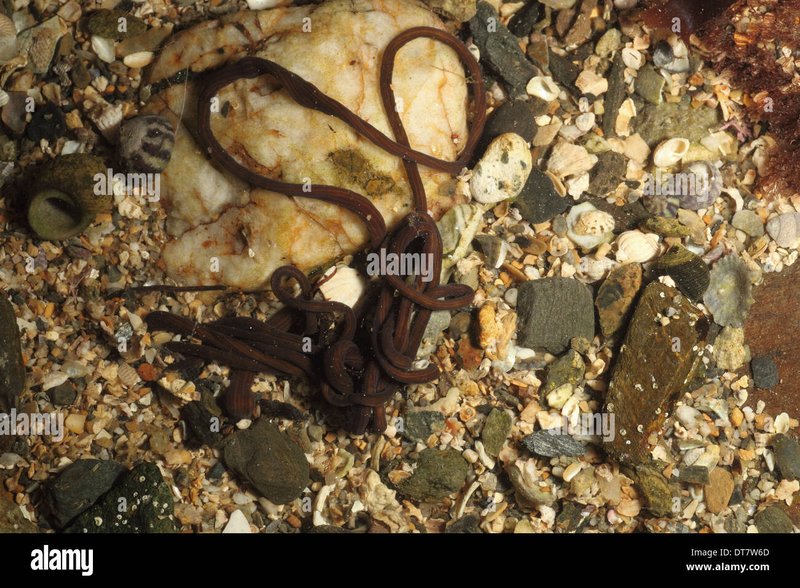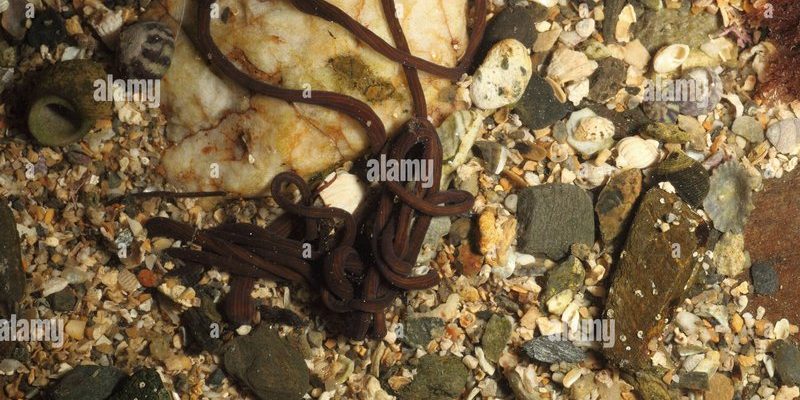
Imagine being in a big swimming pool and suddenly the water drains away. While you might scramble to find a way out, our slippery friends, the bootlace worms, have developed some remarkable adaptations to survive these dry spells. Their unique strategies make them one of nature’s clever survivors. So, let’s dive deeper into how these little wonders thrive during low tide.
Understanding Bootlace Worms
Bootlace worms belong to the *Lineus* genus and are some of the longest worms in the world, stretching up to several meters in length. You might find them in coastal areas where they wiggle through the sand or mud, often hiding beneath the surface. They don’t just blend in with their environment—they’re also masters of navigating the challenges of their habitat.
These worms are fascinating for multiple reasons. Not only do they have a distinct appearance with their long, thin bodies, but they also exhibit behaviors that set them apart from other marine life. When the tide goes out, the situation for bootlace worms becomes a bit precarious. This brings us to the important question: how do they manage to avoid drying out?
Understanding Desiccation
Before we discuss the bootlace worm’s survival tactics, let’s take a moment to understand desiccation. Desiccation happens when an organism loses water faster than it can absorb it. For creatures living in tidal zones, this is a common hazard, especially at low tide. Think of desiccation as a mini-drama playing out—without water, it’s a race against time.
The risk is higher for bootlace worms, as they are nearly 90% water. Losing too much water can lead to a loss of essential functions. Their response to this danger is both fascinating and resourceful. Instead of merely hiding away, they employ a series of clever strategies to withstand the dry conditions.
Behavioral Adaptations
When the tide retreats, how do bootlace worms respond? It’s all about behavior. These worms have developed a few key tactics to avoid drying out.
- Burrowing Deep: As the tide recedes, bootlace worms instinctively burrow deeper into the sediment. By moving down, they can access moister layers of mud and sand, which help them stay hydrated.
- Nestling in Moisture: If they can’t go deep, they often wiggle into small pockets of moisture in the mud. These tiny spots act like little reservoirs, providing them with enough hydration to last until the tide comes back in.
- Reducing Activity: During low tides, bootlace worms slow down their movements. This decrease in activity helps conserve water, reducing the chances of desiccation.
These behaviors are not just smart; they are critical to their survival. It’s as if they have a built-in survival manual that guides them through tough times.
Physiological Adaptations
It’s not just behavior that helps bootlace worms. They also have incredible physical adaptations that enable them to deal with low tide.
- Skin Structure: Bootlace worms have a special skin that can help trap moisture. Their outer layer is thin, allowing gas exchange while still minimizing water loss.
- Body Composition: The high water content of their bodies means they can absorb moisture from their surroundings more efficiently when conditions allow. They act like living sponges!
- Reduced Metabolism: To cope with low water availability, bootlace worms can lower their metabolic rate. This means they can sustain themselves on less water and energy until the tides return.
These physiological traits work in tandem with their behaviors, creating a robust survival strategy that’s nothing short of impressive.
The Role of Environmental Factors
Environmental factors play a big part in how well bootlace worms manage at low tide. The salinity of the surrounding water, temperature, and even the type of sediment can impact their survival.
For instance, during unusually hot or dry periods, the risk of desiccation increases. Bootlace worms might struggle more under these conditions, creating a precarious situation. On the flip side, if the conditions are just right, these sensitive worms can thrive. It’s all about balance—understanding and adapting to their environment is key.
The Importance of Tides
Tides are the heartbeat of coastal ecosystems. They dictate not just when creatures like bootlace worms are submerged or exposed but also how they interact with their environment. The cyclical nature of tides allows these worms to have predictable patterns of existence.
It’s fascinating to think about how bootlace worms have adapted to this rhythm. They rely on the return of high tide not just for hydration but also for food and survival. At high tide, they can access nutrients from the surrounding water, making it a perfect balance of life and timing.
Why This Matters
Understanding how bootlace worms avoid desiccation at low tide isn’t just a fun fact for nature lovers—it’s crucial for scientists studying ecosystem resilience and biodiversity. By observing these adaptations, we can learn more about how other organisms cope with similar challenges.
Additionally, this knowledge can guide conservation efforts. As coastal environments face rising sea levels and changing climates, understanding the vulnerabilities and strengths of creatures like bootlace worms can help protect fragile ecosystems. It’s about recognizing the interconnectedness of life and appreciating the clever adaptations that allow it to thrive.
Final Thoughts
Bootlace worms are a prime example of nature’s ingenuity. They thrive in a challenging habitat by exhibiting both behavioral and physiological adaptations to withstand desiccation at low tide. As we continue to learn about these fascinating creatures, it’s clear that their survival strategies are a testament to the resilience of life in coastal ecosystems. The next time you’re at the beach, take a moment to appreciate not only the beauty of the waves but also the remarkable life that exists beneath the surface—and how it battles the elements to thrive.

